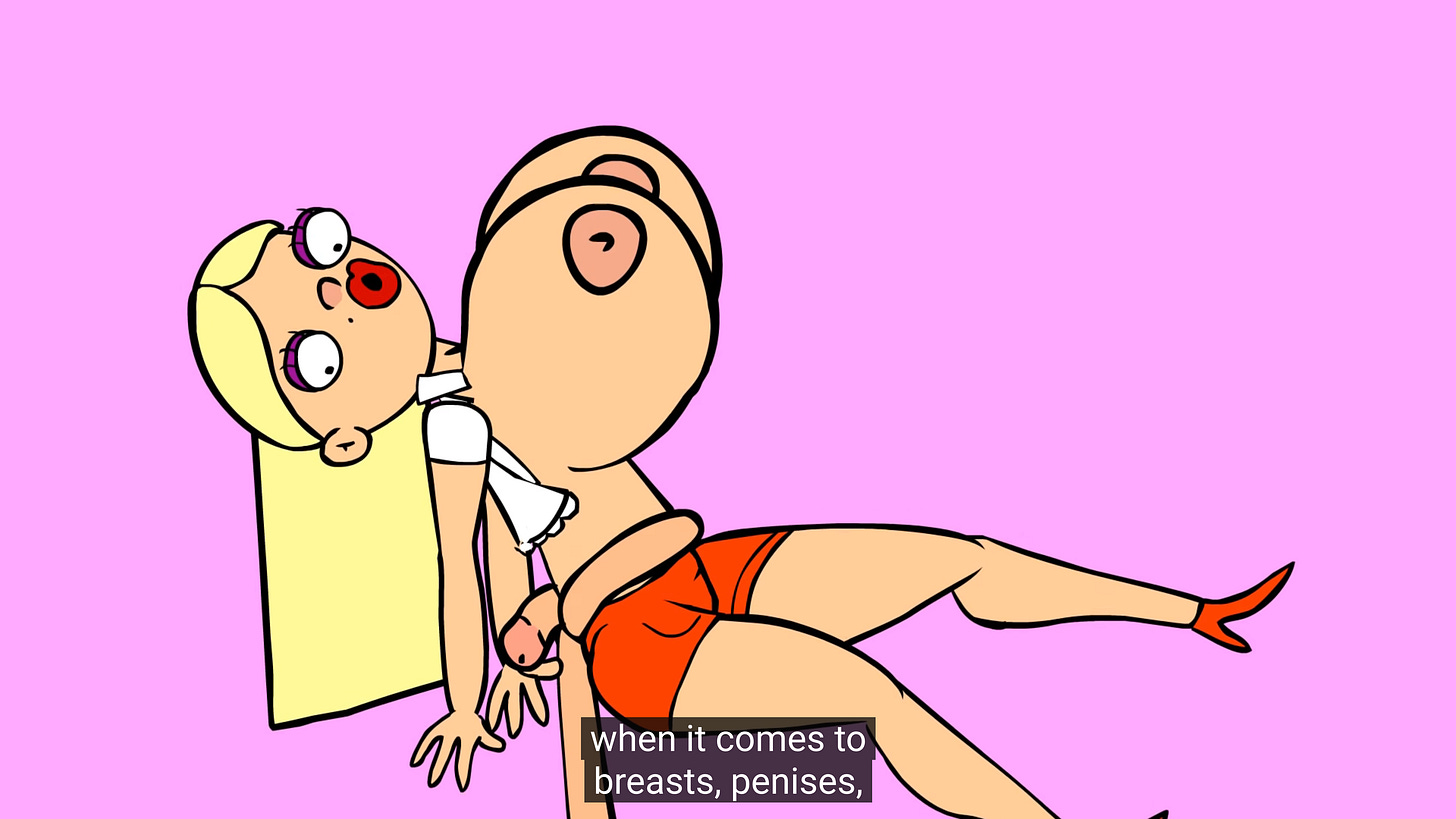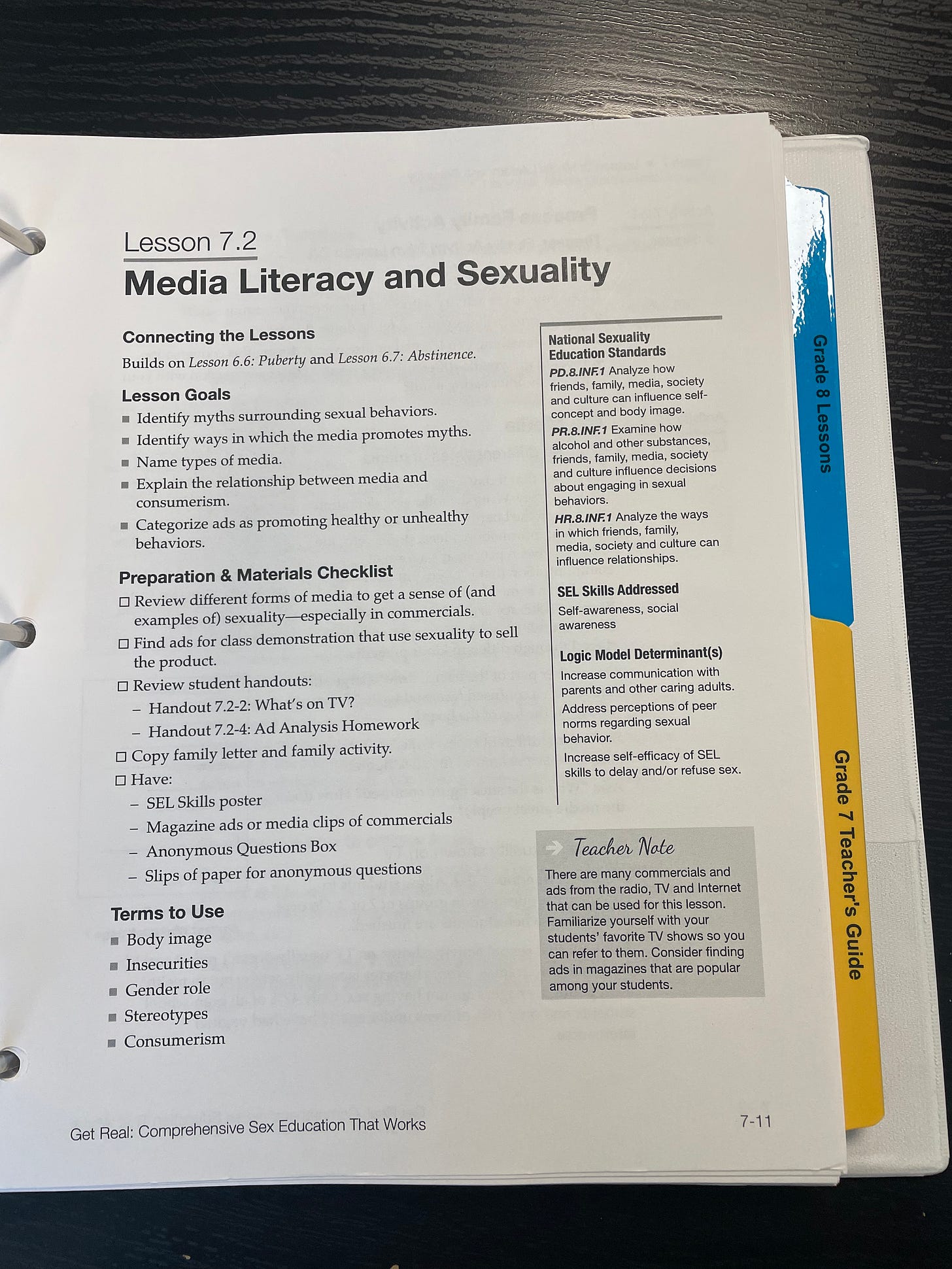Only 1 MORE WEEK to Submit Your Comment on DESE'S "Porn Literacy" Framework!
DESE's Framework includes "Media Literacy," which in CSE-land, also means "Porn Literacy." Tell DESE animated porn doesn't belong in the classroom!
It's time for another friendly reminder to send DESE your public comment on the new draft Comprehensive Health and Physical Education Framework.
Every week since the public comment period began, we have been highlighting one objectionable area of the framework and providing you with an example of curricula that would align with the Framework.
To see our previous countdown posts, click HERE, HERE, HERE, HERE, HERE and HERE.
Today we are highlighting the idea of “media literacy,” how it crops up in the Framework, and why parents need to know about this deceptive term. Media literacy has been defined as: “the ability to decode media messages (including the systems in which they exist); assess the influence of those messages on thoughts, feelings and behaviors; and create media thoughtfully and conscientiously.” According to DESE, the “Practice 6: Information and Resource Seeking” sections of the framework will enhance media literacy “by students analyzing sources of information and resources to determine the level to which media information and resources help or hinder health” (pg. 14).
On its face, this sounds good. After all, don’t we all want kids to be able to understand and analyze media? Of course we do.
But what parents might not realize is that “media literacy” often includes discussions of pornography. This is called “Porn Literacy.” Porn Literacy discussions sexualize children by introducing the topic/concept of pornography, and they often present watching porn as normal, or even a healthy part of being a curious young adult. This sort of discussion is light years away from the “just because you see something on TikTok doesn’t mean it’s true” or “some news channels are more biased toward one political party than the other” messaging most parents would expect under the umbrella of media literacy.
Remember SIECUS, the creepy “sex ed for social change” groomer org we talked about last week? Well, they promote Porn Literacy, too.
Here’s where we think Porn Literacy is hiding in DESE’s draft Framework, in standards for grades 6-8 and grades 9-12:
Healthy Relationships [6.3.HR]
4. Analyze the impact of technology and social media on relationships (e.g., use of smartphones, sharing relationship information, GPS tracking). (pg. 33)
Gender, Sexual Orientation, and Sexual Health [6.5.GS]
3. Analyze internal and external influences (e.g., personal values and beliefs, peers, media, technology, family, society, community, culture) that have an impact on an individual’s sexual behaviors. (pg. 36)
Gender, Sexual Orientation, and Sexual Health [9.5.GS]
1. Analyze a variety of internal and external influences (e.g., peers, media, family, society, community, culture) on a person’s attitudes, beliefs, and expectations about sexual behavior and identity. (pg. 44)
These standards don’t say “porn,” but they don’t need to. If the teachers are using any of the common CSE curricula that meets these standards and also incorporate Porn Literacy, that’s where the porn discussions get smuggled in.
Remember Amaze? We have talked about this free online CSE curricula before. Amaze is funded by Advocates for Youth, the activist organization that had a hand in writing DESE’s draft Framework. Amaze has multiple videos about Porn Literacy. Check out the standards for one of their videos, “Porn: Fact or Fiction?” below to see how similar they are to DESE’s standards:
And, here are a few quotes and scenes from the video, which Amaze deems appropriate for kids as young as 9 years old:
“Sometimes when you are on the internet, you might accidentally or intentionally end up on a website that features pornography, sometimes called porn.”
“Being curious about sex and looking at pictures or films of naked bodies or people engaging in sexual behaviors is perfectly normal.”
And then the video goes on to make the point of Porn Literacy, which is, porn is not like real life. For instance, porn star Julie Melons has breasts so large that they make her float away.
And porn star Miles Long has a penis so long that he can lasso Julie with it and bring her back to earth.
Of course there is also the obligatory LGBTQ-friendly scene, where Julie Mellons is randomly overcome with lust for the pizza delivery girl…
But then she’s back in the sack with Miles, where they have sex for so many hours straight that apparently she gets bored and decides to check her phone.
The video makes a passing reference to porn that contains “violent images or strange-looking behavior that might be scary or disturbing”, but it never tells kids they shouldn’t watch scary or disturbing porn. In fact, it never says they shouldn’t watch porn at all.
All it says is, “if you do come across something on the internet that makes you feel uncomfortable or confused, talk to an adult you trust.”
So in other words, 9 year old, if the porn you watch doesn’t make you feel uncomfortable or confused, it’s all good. Just remember remember that it’s not fair to expect that your real-life sexual partners will have giant genitals, and it’s okay if you don’t, either.
This video, which could theoretically be embedded in any lesson that touches on the standards above, also shows up integrated into this Rights, Respect, Responsibility (3Rs) 9th-12th grade lesson on Consent, Sexting and the Law . (This video doesn’t talk about consent, sexting, OR the law, but that just goes to show how easily inappropriate materials can be injected into lessons you would not expect!)

According to the information garnered through the MFI Sex Ed map project, the 3Rs curriculum, produced by Advocates for Youth, has been found in at least 15 MA districts. That doesn’t mean that each of those districts are necessarily using this lesson, but even if they aren’t, what other lessons might they be using that have innocuous titles but contain objectionable material? What other lessons might they be giving to students that fall under standards that sound reasonable but actually sexualize minors?
Pornography use amongst minors is a major problem. According to a recent survey, 54% of 13 year olds have viewed porn. But that means that 46% have NOT. That means that for every class of middle schoolers who learn about “media literacy,” bringing porn into the conversation potentially sexualizes half of those children. And for the children who have already viewed porn, sending any message that normalizes or approves of its use encourages those children to participate further in harmful behavior.
The organizations pushing for the Framework have already thrown their support behind Porn Literacy. You’ve already seen where SIECUS supports it, and how Advocates for Youth works it into their lessons. But also, SHAPE America supports it HERE. Planned Parenthood supports it HERE. And Media Literacy Now, whose National Advisor on Health Education and Media Literacy was a DESE framework panelist, supports it HERE. This is why we think that Porn Literacy will sneak in under DESE’s draft Framework.
But even if no Porn Literacy lessons are taught, the fact remains that you really can’t teach standards about “Gender, Sexual Orientation, and Sexual Health” and how media impacts these topics without showing students examples of media that talks about these things.
This 7th grade lesson from Get Real, Planned Parenthood’s CSE curriculum (which has also been found in many MA schools), is a perfect example of how a media literacy lesson can sexualize kids without directly referencing pornography. In order to teach kids about media literacy and sexuality, teachers are instructed to show students examples of sexy ads as part of the lesson.
None of this is necessary to teach kids how to keep their bodies healthy. None of this is necessary to teach kids, when they are old enough, how babies are made. And none of this is necessary to teach kids how to responsibly consume media and to recognize media bias.
It would be nice if parents could trust that innocent sounding topics like “media literacy” could be taken at face value. But time and time again, CSE activists prove that they can’t be. And this is why we must reject DESE’s draft Framework.
To submit your comment today, click HERE to use MFI's easy submission form.
If you have already submitted a comment through MFI’s form, or you would prefer to submit more detailed feedback, you can also submit feedback through DESE’s survey. This is what the activists SIECUS is encouraging people to do. HERE is the link to DESE’s survey.
You can also read THIS POST for other ways to submit your comment. You’ll also find lots of other useful links including our extensive 33-page evaluation of the most concerning content in this draft Framework. And if you prefer a quick look at the issues with DESE's draft Framework, click HERE to download our pdf one-sheet.
If you haven’t sent DESE your comment yet, today is your day! There is only one week left. Don’t wait any longer to make your voice heard.



















We don't need it
No